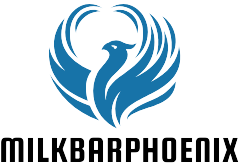Table of Contents
ToggleImagine trying to navigate a foreign city without a map. Confusing? Absolutely. Now, picture that city being a sprawling, complex software project where every turn could lead to disaster. This is where software development documentation plays its crucial role. It’s not just a good idea: it’s essential for the success of any project, ensuring teams stay aligned and projects run smoothly. Whether you’re a seasoned developer or just dipping your toes into the coding world, understanding the importance of documentation can save time, prevent headaches, and make your life a whole lot easier.
The Importance Of Software Development Documentation

Software development documentation is like the foundation of a building. Without it, everything else crumbles. Good documentation acts as a guide, keeping developers on the same path, which is particularly vital for large teams working on extensive projects. When everyone knows the objectives, timelines, and technical specifications, they can collaborate more effectively.
Also, documentation helps onboard new team members. Without a proper understanding of the code, newcomers can feel overwhelmed. Documentation allows them to ramp up quickly, reducing the time spent learning the ropes. Also, it often reduces dependency on specific individuals, ensuring that the knowledge is preserved even when team members leave.
But it’s not just about internal processes. Quality documentation can enhance user experience, helping end-users navigate the software efficiently. It clarifies functionality, features, and even troubleshooting steps. In short, high-quality documentation resonates throughout the development lifecycle, impacting not just the developers but users and stakeholders alike.
Types Of Software Development Documentation
Software development encompasses various documentation types, each serving a unique purpose. Understanding these types can streamline processes significantly.
1. Requirements Documentation
This includes detailed specifications of what the software should accomplish. It captures stakeholder expectations and provides a reference point throughout the development.
2. Design Documentation
Here, the architectural blueprint takes form. This documentation includes diagrams and models illustrating system components and their interactions.
3. Technical Documentation
Intended primarily for developers, this covers codebase structures and algorithms, helping anyone who interacts with the code to understand its workings.
4. User Documentation
This type is aimed at the end-users, providing manuals, tutorials, or help files that guide them through the software.
5. Maintenance Documentation
As software evolves, so does its need for updates and patches. Maintenance documentation outlines procedures for fixing bugs or adding new features, ensuring smooth transitions during upgrades.
Key Elements Of Effective Documentation
Creating effective documentation requires focus on several core elements. While every project is unique, certain best practices stand out.
Clarity
Documentation should be easily understood. Technical jargon can alienate readers, making it crucial to use clear language that everyone on the team can comprehend.
Structure
Well-organized information can make the difference between a helpful guide and a confusing mess. Utilizing headings, lists, and summaries can improve readability.
Consistency
Consistency in format and terminology is vital. This ensures that readers aren’t left guessing what a term means or how a section is organized.
Version Control
Keeping track of changes is essential, particularly for projects that evolve over time. Version control ensures everyone is on the same page by providing history and context for updates.
Tools And Best Practices For Documentation
With the plethora of documentation tools available, choosing the right one can seem daunting. But, the right tools can simplify the process exponentially.
Markdown Editors
These are often favored for their simplicity. Editors like Markdown or AsciiDoc can be used to create lightweight, readable documentation without getting bogged down in formatting complexities.
Wiki Software
Tools like Confluence or MediaWiki allow for collaborative document development, making it easy for teams to work together on live documentation.
Code Commenting Tools
Integrating documentation within the code itself using comment tools (e.g., JSDoc for JavaScript) can help keep everything aligned. This way, developers document as they go, ensuring information isn’t lost over time.
Best Practices
Regularly review and update documentation in sync with project evolution. Also, consider seeking feedback from both technical and non-technical stakeholders to ensure the documentation serves all its intended audiences.
Challenges In Software Documentation
Even though its importance, software documentation often faces several challenges. Recognizing these pitfalls can help teams mitigate them effectively.
Time Constraints
In fast-paced development environments, documentation can easily take a back seat. But, prioritizing documentation is crucial. Ignoring it can lead to more significant issues down the line.
Lack of Standardization
Without standardized processes, documentation efforts can vary wildly between team members, leading to a mismatched compilation of information. Establishing templates and guidelines can help combat this inconsistency.
Resistance to Documentation
Some developers may see documentation as a chore, preferring to focus solely on code. Emphasizing the benefits and incorporating documentation efforts into the development cycle can help reduce this resistance.
Future Trends In Software Development Documentation
As the tech landscape evolves, so too will software documentation practices. One emerging trend is the integration of artificial intelligence. AI-driven tools that automate documentation processes can help ensure that information remains up-to-date without overwhelming developers.
Besides, the push for agile methodologies continues to shape documentation. Agile encourages iterative development, which requires documentation to be dynamic rather than static, adapting as projects progress.
Finally, with remote work becoming the norm, emphasis on accessible documentation has spurred the adoption of cloud-based solutions. These allow teams to collaborate seamlessly and ensure that everyone has access to the latest updates, regardless of their location.




